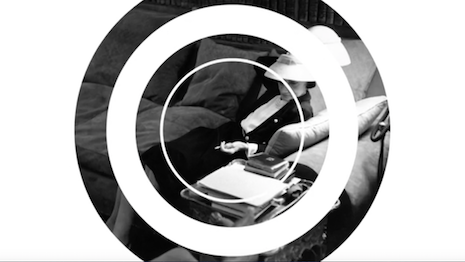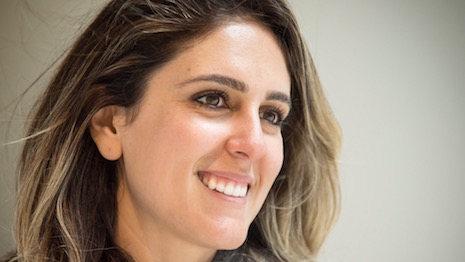- About
- Subscribe Now
- New York,
April 18, 2017

 Still from the Inside Chanel Chapter 7 video. Image credits: Chanel
Still from the Inside Chanel Chapter 7 video. Image credits: Chanel
By Jasmine Bina
As new luxury evolves and begins to redraw the lines around access, belief and behavior, we are seeing fresh narratives emerge in the space. Just as with any brand in any industry, it is the stories that help guide our understanding as consumers.
I have discussed how new luxury is undermining old-guard brands and changing our perception of the female form, but something even more significant is taking place around the verbal and visual languages that new luxury uses to communicate itself.
By rewriting the narrative, it shifts the landmarks between consumer, brand and world - landmarks once immovable, but now drawing a clear line between the old and new.
“Something happened here”
Heritage brands rely on rambling stories of history and expertise.
A watchmaker’s legacy, a jeweler’s century of craft or a couturier's hallowed grounds no longer command the authority they once did.
As millennial consumers have changed their value systems and new luxury brands are forced to edge their way into the arena, a very strong, very significant new narrative has started bubbling to the surface.
New luxury points to a moment of impetus. There is a place and time when something transformative happened, and the brand is an extension of that moment into the future.
The new luxury brand was borne of that clear inflection point, and continues along that trajectory in constant motion.
Supreme relies heavily on this narrative in everything from its gritty, ambience-driven media to the videos and legends of the original mid-‘90s crew that seemingly owned the Lafayette scene in New York.
As any fan can tell you, the soul of the brand is bound to a group of kids in a specific point in time when everything in the world changed.
Supreme represents New York during an important point in recent history, is woven into the hugely influential movie KIDS during a critical moment of revelation for a generation, and defined a subculture based on changing attitudes. It is a brand with a very clear sense of place and time that tells the story, “something happened here.”
This is not about the heritage. It is about the impetus.
Chanel’s recent Inside Chanel launch cleverly turned heritage into context, in much the same way.
The breathless movement through the brand’s 18 short films is punctuated by two distinct moments focusing on Gabrielle. It is her hope and heartbreak, experienced against a very specific historical background that creates the initial jolt for the brand.
Something happened to Gabrielle, and to all women, in that time and place. Chanel is that moment, reforming and traveling through the here-and-now.
The Inside Chanel Chapter 7 video
“I feel you”
When Gucci launched its recent #TFWGucci campaign of “couture memes” to mixed – and very strong – reactions, it was not just employing a marketing gimmick. Nor was it merely co-opting a social media mechanism to get short-lived attention. Gucci was addressing a narrative in which millennials and Gen Zs at the top of the funnel are well versed.
“I feel you” means a lot more than “I see you,” “I understand you” or even “I am you.”
When I feel you, I am sharing a tiny moment of which only the two of us are a part. It is not just a formal interpretation of “that feeling when,” but rather the new currency of connection.
Today’s ultimate nod of recognition happens when two people authentically feel or experience life in the same way.
Memes, emoji, stickers and filters also point to a much larger language phenomenon taking place.
As mobile and digital has become primary hardware for communication, a whole world of vital nonverbal cues has been lost in the mix.
Intonation, tone and emphasis have been replaced by a new layered language that lets us better communicate and connect with one another.
As researchers and founders in the space have put it, these new language forms are “shaping and codifying the way people talk to each other online in new and multi-layered ways” out of necessity.
To share a small moment of understanding, or the intimate moment of “that feeling when,” is to shortcut a very targeted, one-on-one moment of acknowledgement.
In a world where major brands are desperate to make individual conversations mean something, Gucci’s meme campaign does not seem so off-brand after all.
Instead, it does what any good meme accomplishes by pausing on a micro-moment and turning it into a point of connection.
Personal moments of bonding and understanding, no matter how small or seemingly insignificant, are essential to young consumers. It is a touch point that often only happens in a retail environment.
Finding new ways to carry the conversation of “I feel you” into digital realms, regardless of how literal or abstract, small or seemingly silly, tap into an emerging narrative that defines new luxury.
“Make me care”
In his 2012 TED Talk, filmmaker Andrew Stanton deconstructed storytelling down to its core call to action: “Make me care.” It is a well-known rule that applies to brands as well, now more than ever.
A story, just like a brand, makes a promise that must be delivered upon. The rule has not changed, but the meaning of a brand promise has.
Many traditional names in the space convey a promise of quality, rarity or exclusivity.
Whether it is through an explicit statement or implied through marketing, the promises are very feature driven and focus on the products.
A brand promise, however, is about benefits, not features.
It is easy to forget that the overall luxury promise is that of belonging. It is a sense of realizing your potential and experiencing acceptance. It is an emotional brand promise that revolves around the individual, and new luxury brands have molded this general promise to fit their audiences.
Vetements is a promise of radical evolution. Rodarte is a promise to access your dark, female magic. Glossier is a promise of inner beauty, while Milk Makeup is a promise to untether gender from identity.
All of these stir deep consumer desires that completely eclipse the products themselves.
As Mr. Stanton says, storytelling “is confirming some truth that deepens our understanding of who we are as human beings,” and all of these brands give the consumer a reason to care.
AS GENERATIONS grow up, so do the stories they tell themselves.
Millennial and Gen Z narratives in luxury show a movement toward deconstructing old paradigms and replacing them with far more compelling, far more specific stories that breathe new meaning into the luxury sector.
It is an exciting time for brands to re-align their identities along these new plot points.
 Jasmine Bina is president of Concept Bureau
Jasmine Bina is president of Concept Bureau
Jasmine Bina is president of Concept Bureau, Santa Monica, CA. Reach her at jasmine@theconceptbureau.com.
Share your thoughts. Click here